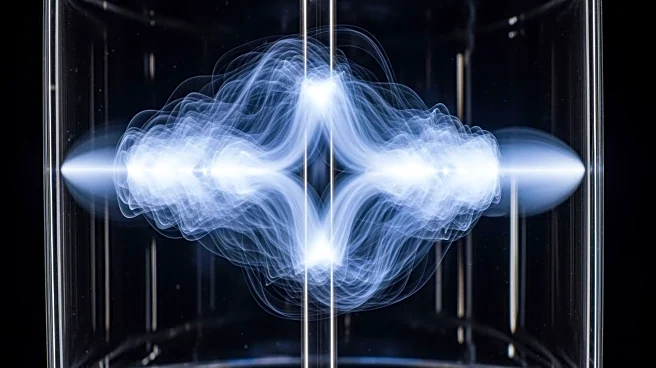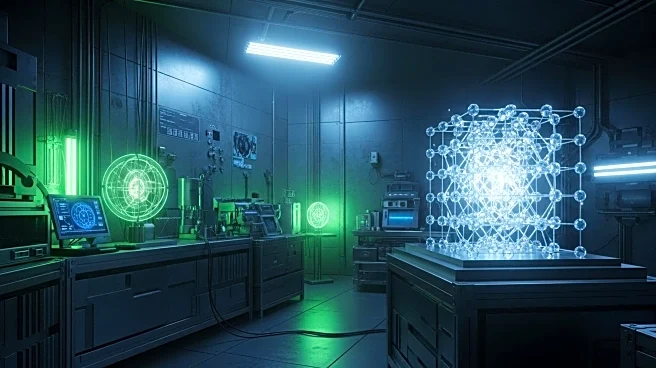What's Happening?
Researchers at Washington State University, including Colby Schimelfenig, Federico Serrano, and Corey Halverson, have made significant advancements in the study of Bose-Einstein condensates. They have demonstrated
self-trapping within a spin-orbit coupled Bose-Einstein condensate held in a stationary optical lattice. This was achieved by controlling atomic interactions and inducing coupling between momentum states, leading to a shift from a freely flowing atomic current to a self-trapped state. The team observed non-analytic behavior in the atomic current following rapid changes in experimental conditions, indicating a dynamical phase transition. This research provides new insights into the behavior of quantum systems and opens avenues for exploring the properties of spin-orbit coupled Bose-Einstein condensates.
Why It's Important?
The discovery of self-trapping and dynamical phase transitions in Bose-Einstein condensates is crucial for advancing quantum technologies. Understanding these phenomena can lead to developments in areas such as non-equilibrium criticality and quantum enhanced metrology. The ability to manipulate and control quantum states in this manner could have significant implications for the design of future quantum devices and systems. This research enhances the understanding of complex quantum systems and provides a versatile platform for exploring nonlinear dynamics, potentially impacting industries focused on quantum computing and advanced materials.
What's Next?
Future research will focus on developing a more complex model to fully capture the behavior of the system, as defects emerge after a short period, introducing instability and limiting the two-mode description. The team plans to extend their model to provide a more complete understanding of the observed dynamical phase diagram. This could lead to further breakthroughs in the manipulation of quantum states and the development of new applications in quantum technologies.
Beyond the Headlines
The observation of self-trapping and dynamical phase transitions in Bose-Einstein condensates highlights the intricate interplay between spin and spatial degrees of freedom. This research not only advances the field of quantum physics but also poses ethical and philosophical questions about the manipulation of quantum states and the potential for creating new forms of matter. As scientists continue to explore these phenomena, the implications for our understanding of the universe and the nature of reality could be profound.











